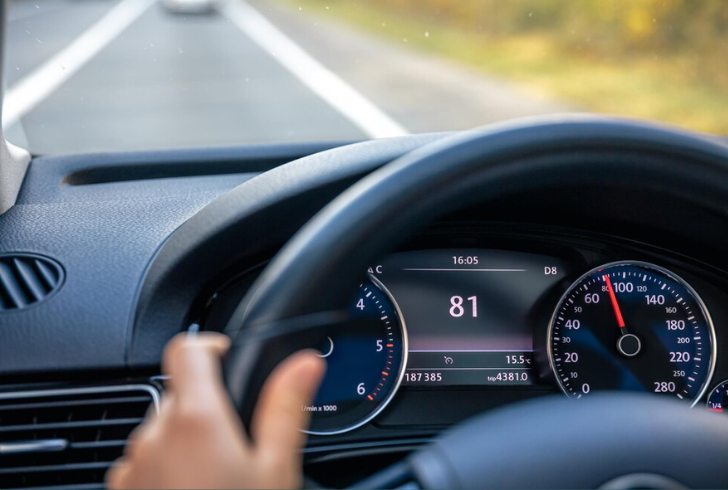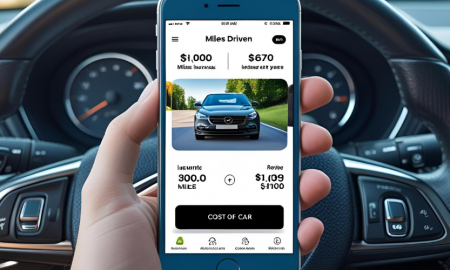
How Many Miles Is Good for a Used Car? Find Out Here

When buying a used car, one of the first questions that might pop into your mind is how many miles is good for a used car? After all, the number of miles a car has on it can give you a good idea of its condition and how much life it may have left. But mileage is only one part of the equation. Other factors, like maintenance history, the number of previous owners, and the general care a car has received, all play a role in determining whether a used vehicle is worth purchasing.
In this guide, we’ll explore how many miles on a used car is considered good and what you need to keep in mind when assessing mileage before making your decision.
Understanding the Basics of Mileage on Used Cars
As a general rule of thumb, a car accumulates an average of about 12,000 miles per year. So, if you’re looking at a five-year-old vehicle, you can expect it to have around 60,000 miles on the odometer. When you come across a car with significantly more or fewer miles than that, it may raise some red flags.
However, it’s not always this simple. Just because a car has high or low mileage doesn’t automatically determine its condition or reliability. It’s important to take other details into consideration, including the car’s age, maintenance records, and any history of repairs.

Freepik | A 5-year-old car typically has 60,000 miles, but significant discrepancies can raise concerns.
How Many Miles on a Used Car is Too Much?
While there is no fixed number of miles that is “too much,” it’s helpful to know that modern cars are built to last much longer than in the past. That said, if a used car has more than 100,000 miles on it, you might want to do a closer inspection. Cars today can comfortably run for 150,000 to 200,000 miles with proper care, so mileage beyond that isn’t necessarily a dealbreaker.
Yet, high-mileage cars may be more prone to wear and tear. It’s essential to check how well the vehicle has been maintained. For instance, if the car has 150,000 miles but the oil changes and regular servicing were neglected, it could lead to costly repairs down the line.
When Is Low Mileage a Red Flag?
On the flip side, very low-mileage cars might seem like a great deal at first glance, but they can come with hidden issues. A car with unusually low miles could have been sitting idle for long periods, which can cause certain parts of the car, like the engine seals or tires, to deteriorate. This lack of use might lead to other maintenance issues that will need attention soon after purchase.
If you’re considering a low-mileage used car, it’s crucial to check the car’s maintenance history and inspect it thoroughly for signs of rust, wear, or mechanical problems caused by inactivity.
Factors Beyond Mileage to Consider
While mileage is an important indicator of a car’s health, it’s not the only factor to consider. Other details include:
1. Number of Owners – A car with multiple owners may have experienced inconsistent care or repairs. A car with just one or two owners is generally considered a better choice, as it may have been treated more consistently.
2. Maintenance and Repair Records – A car that has been regularly maintained is likely to last longer. Be sure to ask for records of oil changes, brake services, and other essential repairs.
3. Accident History – A car with a history of accidents could have underlying issues that are not immediately obvious. Always request a vehicle history report to understand the full background of the car.
Is It Worth Buying a High-Mileage Used Car?
Many people shy away from buying high-mileage used cars because they believe they’ll be more prone to failure. However, with the right research and a good maintenance history, high-mileage cars can be an excellent choice.
High-mileage cars have already gone through the most significant portion of their depreciation, meaning they’re typically much cheaper than new or low-mileage cars. Additionally, cars with higher mileage are often well broken in, meaning they’ve already gone through the initial wear and tear. As long as the car has been well-maintained, there’s no reason why a high-mileage car can’t continue to serve you for many more miles.
How to Assess Mileage and Condition Together

Freepik | Have a mechanic thoroughly inspect a used car to identify potential issues.
When evaluating how many miles is good for a used car, it’s essential to look at the bigger picture. A 10-year-old car with 70,000 miles might seem like a great deal, but if it has had five previous owners and lacks maintenance records, it could be a risky investment.
Instead, consider the following steps:
1. Check the Vehicle History Report – This will give you insight into the car’s past, including accident history, title status, and service records.
2. Have a Professional Inspection Done – Always take a used car to a trusted mechanic for a thorough inspection. A mechanic will assess the car’s overall condition, from the engine to the brakes, tires, and suspension.
3. Test Drive the Car- Taking the car for a test drive will allow you to feel how it drives and check for any unusual sounds or issues.
4. Consider Future Costs – High-mileage cars might come with immediate repair costs, but they often have lower purchase prices. Factor in your budget for any potential repairs or maintenance that may be needed soon.
Making the Right Decision
While mileage is an important factor when buying a used car, it’s not the only one you should focus on. The age of the vehicle, how well it’s been maintained, and the number of previous owners all contribute to its overall value.
If you’re asking how many miles is good for a used car, the answer is simple – it depends. A car with 100,000 miles can be just as reliable as one with 50,000 miles, as long as it has been taken care of. When in doubt, always perform due diligence with a vehicle history report and a mechanic’s inspection to ensure you’re making a wise investment.
By understanding the key factors beyond mileage, you can make a more informed decision and drive away with a used car that will serve you well for years to come.
More inDriving
-
`
Adults in Ohio Face Stricter Rules to Obtain Driver’s License
Ohio has passed a new law that will change the way adults under 21 get their driver’s licenses. Signed into law...
July 31, 2025 -
`
Gen Z Craves Career Guidance, But Their Parents Are Struggling Too
Gen Z is stepping into the future with curiosity and ambition—but they’re not doing it alone. A growing number of teens...
July 25, 2025 -
`
Do Car Insurance Companies Offer Pay-As-You-Go Plans?
Car insurance premiums often feel unfair to people who rarely drive. Yet, most traditional auto policies still charge a fixed monthly...
July 17, 2025 -
`
Why the Koenigsegg Sadair Spear Is the Ultimate Hypercar Beast
Koenigsegg has revealed a new beast—the Sadair’s Spear. Tuning its focus on raw performance and brutal speed, this hypercar marks the...
July 11, 2025 -
`
Which States Have the Safest—and Riskiest—Drivers in America?
Driving safety isn’t just about skill. It’s also about location. A recent nationwide report shines a spotlight on where drivers are...
July 4, 2025 -
`
How to Save on Tesla Car Insurance Without Compromising Coverage
Owning a Tesla often brings savings on fuel and a futuristic driving experience, but the conversation changes quickly when it comes...
June 26, 2025 -
`
10 Weird Cars That Turned Heads and Won Hearts
Some cars turn heads with speed, others with luxury—but a rare few grab your attention simply by being delightfully strange. From...
June 20, 2025 -
`
Next-Gen Jeep Cherokee Expected to Arrive by Late 2025
After a break of two years, Jeep is prepared to relaunch the Cherokee brand. The automaker confirmed the return with fresh...
June 12, 2025 -
`
9 Tips to Make Night Driving Safer and Less Frightening
Once the sun dips below the horizon, driving becomes more than just a commute—it becomes a challenge. Limited visibility, harsh glares,...
June 6, 2025















You must be logged in to post a comment Login